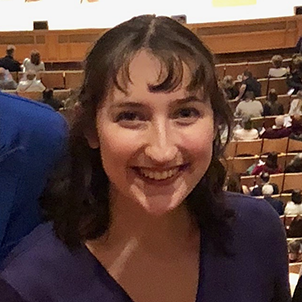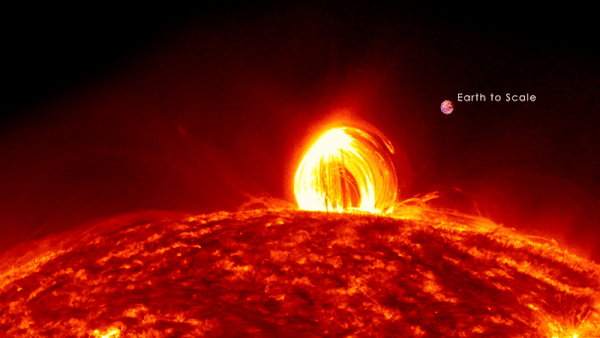Prof. Kazunari Shibata:
'From Jets to Superflares: Extraordinary Activity of Magnetized Plasmas in the Universe' (George Ellery Hale Prize Lecture, 6/3)
The Hale Prize is the most venerated in solar physics and with this prize award talk- marking the 50th anniversary of the AAS Solar Physics Division- Prof. Shibata delivered beyond the most exalted expectations. In 52 minutes he presented a fascinating retrospective in astrophysics and how an initial interest in cosmic jets (such as occur in active galactic nuclei or AGNs) led him to look for astrophysical jets in solar phenomena instead of distant objects.
Basically, he came reluctantly to a decision to depart the search for AGN jets by realizing they were too distant, too difficult to observe and confirm. A pivot poiint arrived by the mid 1980s with the work of Kurokawa et al who found spinning jets on the Sun. This then led to the development of a model - with Uchida- for a "magnetic twist jet" i.e.
The origin of these twist jets could be explained by way of the combined forces of rotation and convection acting on local magnetic fields, e.g.
Subsequent work by Hollweg (1982) disclosed that a simulation of MHD (magnetohydrodynamic) jets could be done, which supported the observational and theoretical work. Subsequent observations showed the standard flare model - especially applied to two -ribbon flares- could account for many of these solar jets. Many of the observations were made by the Hinode and Yohkoh solar satellites and resulted in some fantastic imagery, e.g. associated with a nanoflare and filament eruption:
The arrow used by Prof. Shibata pointing to a jet of interest. But the most amazing photo was of a full prominence eruption on the limb of the Sun, e.g.
Of particular interest to me was how Prof. Shibata - in his flare models - associated the development of such monster events with large, complex sunspots:
This is of intense interest because of my own research over the years, connecting sunspot morphology to the incidence of large solar flares, especially SID (sudden ionospheric disturbance) producing - the topic of my thesis:

In Prof. Shibata's work the emergence of such large, complex (delta class) spots, often of mixed polarity - presaged the most energetic and violent events, whether filament eruptions, solar flares or coronal mass ejections (CMEs) A motivating drive therefore became developing a "unified" model to account for the varied violent manifestations - both micro scale (nanoflares) or macro (CMEs and to ribbon flares)
These aspirations then led to the unified model to account for both large scale events, and small. This was presented in the next slide showing the topological structure on the right- say in a magnetic arcade, with plasmoid location determining the scale:
Further intense work, observation, led to direct evidence of magnetic reconnection in "anemone" jets:
In terms of the plasmoid -based model, the energy release could be quantified by:
dE/ dt = B/4 p V m L 2
Prof. Shibata ended his talk by looking at superflares, monster flares with energy in excess of 10 35 ergs and whether there was a chance of any occurring in Earth's future. The answer, based on the work of graduate students examining over 148 G2 spectral type stars, was unsettling:
That is, we could expect to see one every 500 years. Not a good omen for Earth!
Emily Mason: 'Magnetic Origins of Cool Plasma in the Sun's Corona' (Monday, June 1)
 Ms. Mason is a Ph.D. candidate at Catholic University of America who totally "owned" the first solar physics session on Monday with her paper on raining null point topologies and the manifestation as "coronal rain" . Therein she presented original research into the nature of "coronal rain" and the 60 cases she has documented in her observations. As Emily explained the phenomenon, leading off with null point topologies- referring to a diagram:
Ms. Mason is a Ph.D. candidate at Catholic University of America who totally "owned" the first solar physics session on Monday with her paper on raining null point topologies and the manifestation as "coronal rain" . Therein she presented original research into the nature of "coronal rain" and the 60 cases she has documented in her observations. As Emily explained the phenomenon, leading off with null point topologies- referring to a diagram:"So we're basically talking about null point topologies today. These are structures that form in the low corona, essentially where you mostly have a unipolar region and a parasitic polarity prop up. Around that you get a polarity inversion line or neutral line. You can see in the diagram you get an inner spine that forms and then this dome structure. The open field over it kind of converges around it, and an outer spine extends higher up into the corona. Part is closed and part extends out into the solar wind. The interesting part and why these are called null point topologies is because one has a place where field lines diverge and the magnetic field actually drops to zero there, or: B = 0. So in the next diagram you can see the dome shape, and the null point and the spine extending out into the upper corona.
"The ones I am focusing on have a height between 50 and 150 mega-meters. What I found is that most of these null point events occurred at these altitudes. Coronal rain is a subset of these null point topologies which we then refer to as "raining null point topologies" or RNPTs.
Coronal rain is catastrophically cooled plasma. You can see it forming and falling in the movie and the temperature is about 12,000 Kelvin. The plasma starts out at a few mega-Kelvin and cools down to photospheric temperatures in a process that takes about 5 minutes. Several mechanisms for formation are known such as heating cutoff during a flare and thermal non-equilibrium.
Note these raining null point topologies tend to occur in decaying active regions. They often fall near or actually within a coronal hole boundary.
Note from these movies a lot of this rain forms along the outer spine which is interesting. Because this is coronal rain that is forming on open field lines. And that has mot been observed before because all the information we had dealt with had the coronal rain forming on closed field lines. Because it dealt with the heating that was required to catastrophically cool the plasma".
Interestingly, Emily's model was based on the coronal rain located on open field lines over a helmet like structure, see her initial diagram..
Its development she attributed to a combination of the interchange reconnection and a process known as thermal non-equilibrium (TNE), However, as she pointed out in her Ap. J. Lett. paper, on open field lines TNE is not expected to occur because radiative losses are negligible compared to the enthalpy flux outward.
My own research into the development and articulation of a flare trigger began with the influence of cool plasma, e.g. the diagram below from my thesis (p. 172) describing the onset of the filamentation instability- which is also based on TNE.
This referenced the "condensed cool plasma" - which I warrant is the analog to Ms. Mason's coronal rain, but now on closed instead of open field lines - such as she discovered. My flare trigger also was based in a vastly larger magnetic arcade- ultimately leading to violent eruption whereas her RNPT events are kind of quiescent. To give an idea of what a filament eruption in an arcade looks like I refer to the image below, from Prof. Shibata's lecture:
The point is that a mode of the TNE, likely in conjunction with a plasma instability (e.g. tearing mode) is the immediate agent leading to filament eruption, ibid.:
Here, the filament current intensity is coupled to the magnetic free energy of the sheared background field. Once a critical threshold intensity (I*) is exceeded so also is the energy capacity of the filament. This "condensation mode" of the filamentation instability affects the underlying energy transport and in turn induces the resistive (tearing) mode by which the magnetic free energy can be released. This leads to filament eruption (B) and possibly a solar flare as well.
By contrast, Emily's results presented recent observations of coronal rain (in open field, null point topology events) that appeared to frequently result from "decayed active regions". In my own case, the ARs were relatively recently emerged and also in the vicinity of large area, complex sunspots. (See for example the complex spot in Prof. Shibata's section, above.)
One of Emily's movie recordings of coronal rain is shown below:

I suggest this is where Prof. Shibata's fractal current sheet model might be of use in shedding some further light. Its benefit, as he pointed out, is the ability to connect macro and micro scale plasma structures and dynamics.
---------------------------
* Note: My choice of these two presentations as the "best" in solar physics was totally based on my own subjective assessment, independent of any AAS input. In making these choices I opted for one experienced presenter (full professor) and one doctoral candidate presenter, with an emphasis on originality and lucidity of presentation. I determined Prof. Shibata and Ms. Emily Mason each hit my key criteria for honors.














No comments:
Post a Comment